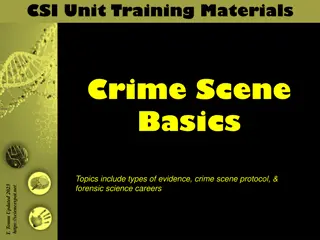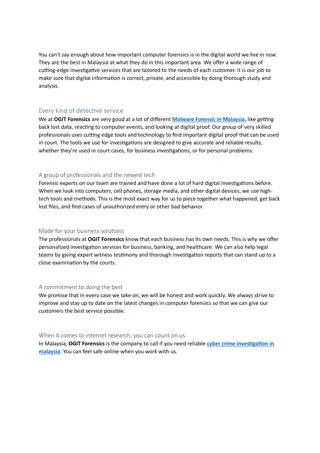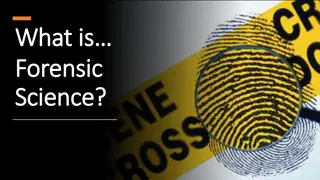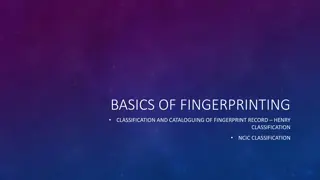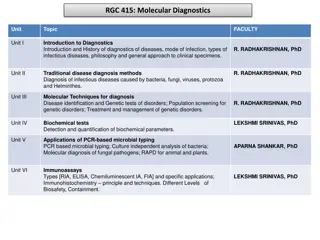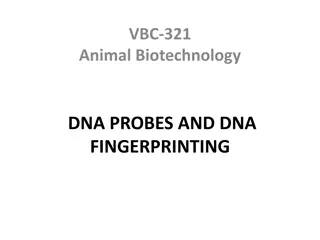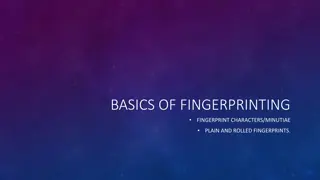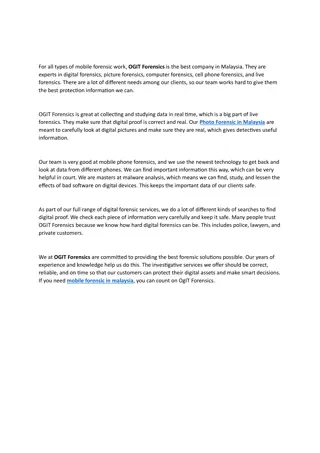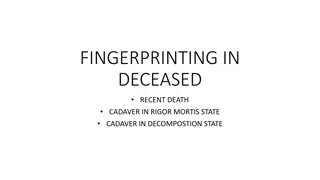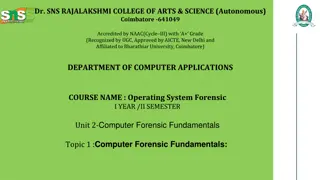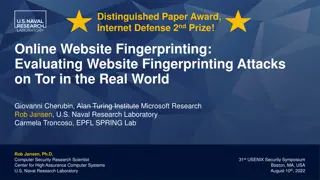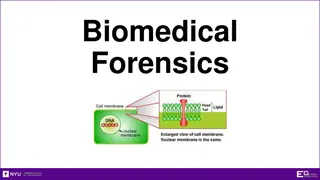Overview of Forensic Fingerprinting Techniques
Explore various forensic fingerprinting techniques such as friction ridge impressions, latent prints, plastic prints, and more. Learn about the different types of impressions, evidence collection methods, and developing and lifting prints for analysis. Enhance your understanding of fingerprinting in forensic investigations with detailed visuals and descriptions.
Download Presentation

Please find below an Image/Link to download the presentation.
The content on the website is provided AS IS for your information and personal use only. It may not be sold, licensed, or shared on other websites without obtaining consent from the author.If you encounter any issues during the download, it is possible that the publisher has removed the file from their server.
You are allowed to download the files provided on this website for personal or commercial use, subject to the condition that they are used lawfully. All files are the property of their respective owners.
The content on the website is provided AS IS for your information and personal use only. It may not be sold, licensed, or shared on other websites without obtaining consent from the author.
E N D
Presentation Transcript
FRICTION RIDGE Fingerprints Palm Prints Barefoot Impressions
FRICTION RIDGE IMPRESSIONS PATENT/VISABLE PLASTIC LATENT
PATENT/VISABLE PRINT Friction ridges that are stained with a foreign colored substance, such as blood, ink, paint, grease or dirt. This makes a visible impression that can be seen with the naked eye.
PLASTIC PRINT An indentation into a soft substrate such as chewing gum, wax, soap, putty, tar, butter or clay which leaves a three-dimensional impression. This makes a visible impression that can be seen with the naked eye.
IMPRESSION EVIDENCE Formed when one object is pressed against another material. Footprints Tire Tracks Bite Marks Tool Marks.
LATENT PRINT Fingerprint impressions secreted on a surface or object. Latent prints are usually invisible to the naked eye.
DEVELOPING FINGERPRINTS Nonporous Surfaces Glass Marble Metal Plastic Finished Wood Light Powder Superglue Fuming Porous Surfaces Fabric Paper Un-Finished Wood Iodine Fuming Silver Nitrate Ninhydrin
DUSTING FOR FINGERPRINTS Select an appropriate powder and brush Fan the brush Dip fan tips in SMALL amount of powder Fan off excess powder Dust area with gentle strokes or light spinning of the brush
LIFTING THE PRINT Use Clear Plastic Tape Apply end of tape away from print and carefully smooth out over print Lift the tape Place tape on a backing card Document necessary information on backing card
LABORATORY TESTING Blood Items to be tested for DNA Known DNA samples Firearms Porous materials (paper, unfinished wood, cardboard, etc.)
WESTERN IDENTIFICATION NETWORK AUTOMATED FINGERPRINTING IDENTIFICATION SYSTEM WIN / AFIS WIN / AFIS
National Crime Information Center Computerized Index of Documented Criminal Justice Information Over 20 Files of Information Available 24 hours a day 365 days a year
PRACTICAL EXERCISE
ROLLING FINGERPRINTS
ROLLING INKED PRINTS Roll the finger on the ink so the entire pad is covered nail to nail Thumb is rolled towards the subject s body (1st Digit rolled) Fingers are rolled away from the subject s body (Order - Index, Middle, Ring, Little finger) Plain Impressions done last (4 fingers 1st, then thumbs)
SPECIAL CIRCUMSTANCES Deformed or Missing Fingers Fully Amputated Tip-Amputated Extra Finger Scarred Fingers Worn Fingerprints
Finger was not fully rolled Allowing the fingers to slip or twist Use of improper inks Failure to clean the subject s fingers Failure to keep equipment clean Use of too much or too little ink Recording fingerprints impressions within the wrong blocks on the print card REASONS FOR REJECTION





